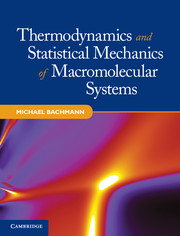Book contents
- Frontmatter
- Dedication
- Contents
- Preface and outline
- 1 Introduction
- 2 Statistical mechanics: A modern review
- 3 The complexity of minimalistic lattice models for protein folding
- 4 Monte Carlo and chain growth methods for molecular simulations
- 5 First insights to freezing and collapse of flexible polymers
- 6 Crystallization of elastic polymers
- 7 Structural phases of semiflexible polymers
- 8 Generic tertiary folding properties of proteins on mesoscopic scales
- 9 Protein folding channels and kinetics of two-state folding
- 10 Inducing generic secondary structures by constraints
- 11 Statistical analyses of aggregation processes
- 12 Hierarchical nature of phase transitions
- 13 Adsorption of polymers at solid substrates
- 14 Hybrid protein–substrate interfaces
- 15 Concluding remarks and outlook
- References
- Index
3 - The complexity of minimalistic lattice models for protein folding
Published online by Cambridge University Press: 05 May 2014
- Frontmatter
- Dedication
- Contents
- Preface and outline
- 1 Introduction
- 2 Statistical mechanics: A modern review
- 3 The complexity of minimalistic lattice models for protein folding
- 4 Monte Carlo and chain growth methods for molecular simulations
- 5 First insights to freezing and collapse of flexible polymers
- 6 Crystallization of elastic polymers
- 7 Structural phases of semiflexible polymers
- 8 Generic tertiary folding properties of proteins on mesoscopic scales
- 9 Protein folding channels and kinetics of two-state folding
- 10 Inducing generic secondary structures by constraints
- 11 Statistical analyses of aggregation processes
- 12 Hierarchical nature of phase transitions
- 13 Adsorption of polymers at solid substrates
- 14 Hybrid protein–substrate interfaces
- 15 Concluding remarks and outlook
- References
- Index
Summary
Evolutionary aspects
The number of different functional proteins encoded in human DNA is of the order of about 100 000, which is an extremely small number compared to the total number of possibilities: Recalling that 20 types of amino acids occur in natural proteins and typical proteins consist of N ∼ O(102−103) amino acid residues, the number of possible primary structures, 20N, lies somewhere far, far above 20100 ∼ 10130. Assuming all proteins were of size N = 100 and a single folding event would take 1 ms, a sequential enumeration process would need about 10119 years to generate structures of all sequences, irrespective of the decision about their “fitness,” i.e., the functionality and ability to efficiently cooperate with other proteins in a biological system. Of course, one might argue that the evolution is a highly parallelized process that drastically increases the generation rate. So, we can ask the question, how many processes can maximally run in parallel. The visible universe contains of the order of 1080 protons. Assuming that an average amino acid consists of at least 50 protons, a chain with N = 100 amino acids has of the order O(103) protons, i.e., 1077 sequences could be generated in each millisecond (forgetting for the moment that some proton-containing machinery is necessary for the generation process and only a small fraction of protons is assembled in Earth-bound organic matter).
- Type
- Chapter
- Information
- Publisher: Cambridge University PressPrint publication year: 2014



